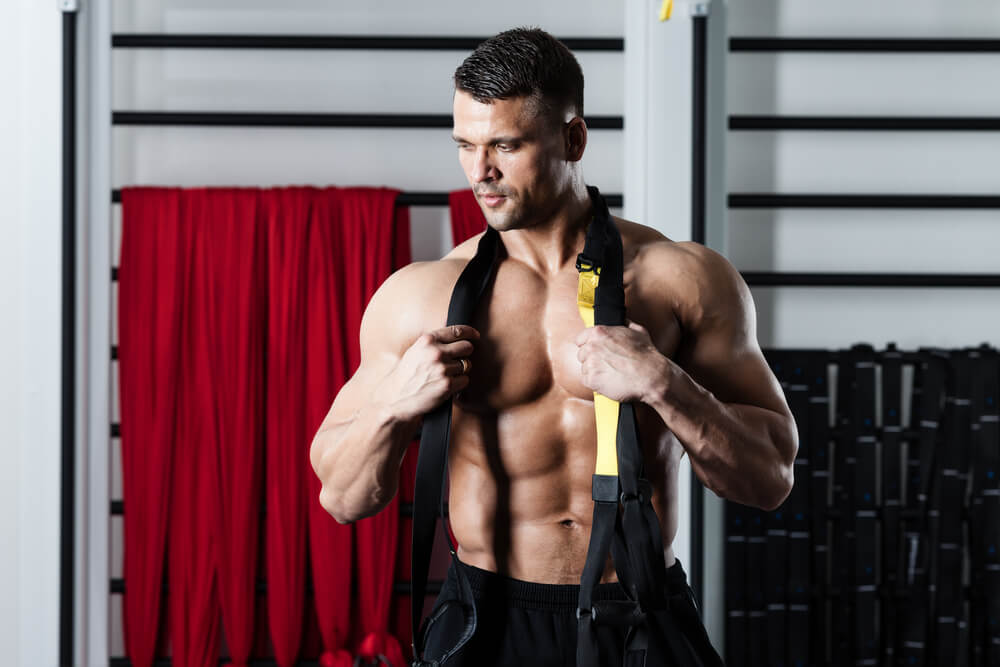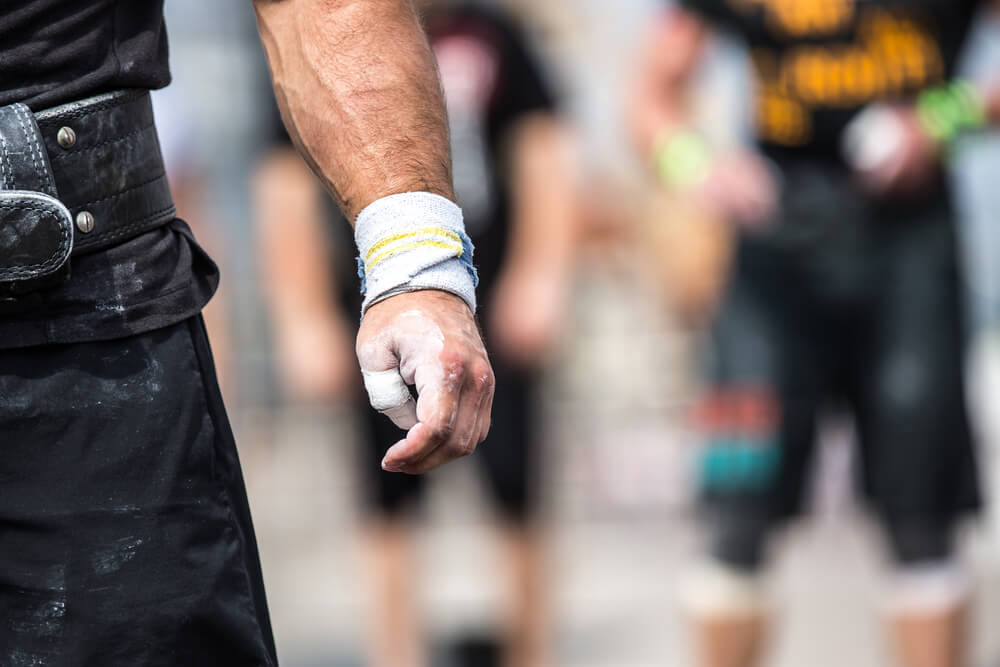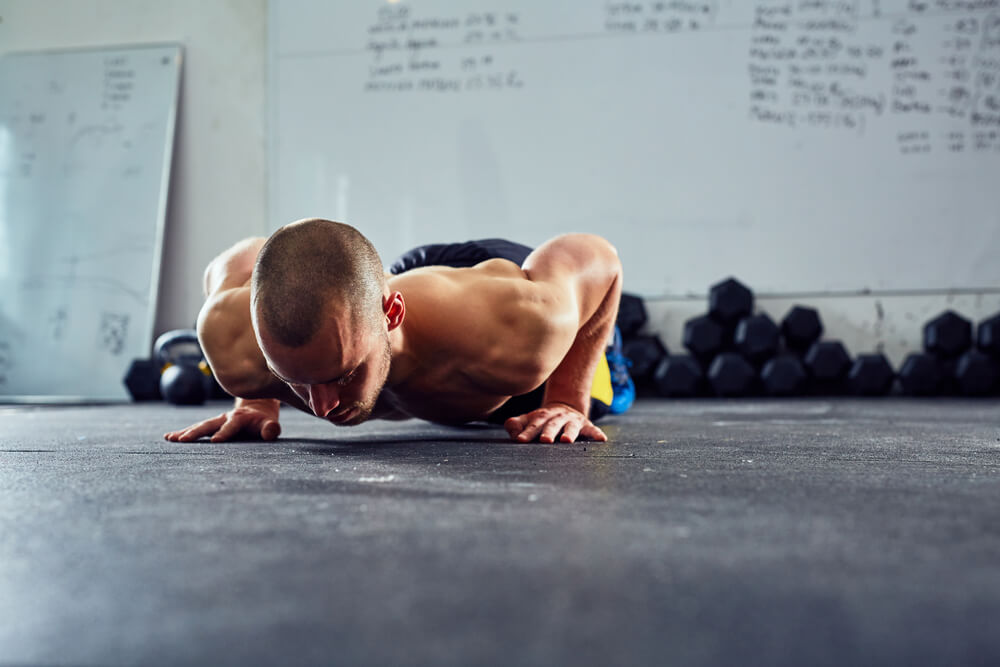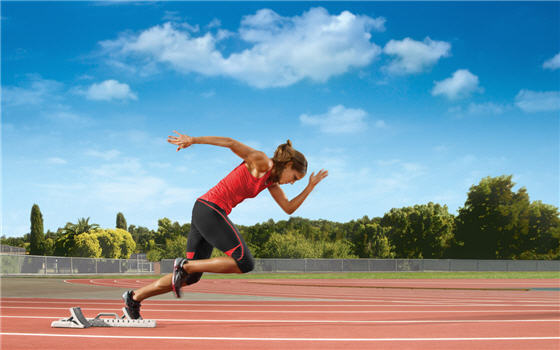
Want to get strong? We’re talking super strong! If strength is your goal, you came to the right place. Why? We explain how you can achieve your goal with functional training.
Aside from just looking amazing in small amounts of clothing, being truly athletic is highly coveted.
But, what does it really mean?
Not only do you look the part, but also when you move, play or perform, you are truly athletic due to brute power, strength, and agility.
Athleticism comes from raw body power and physical might. The good news is that you can train for power gains through functional training methods. And, lucky for you, we will explain how to do it.
Functional Training: Here Are The Real-World Benefits
Functional fitness exercises train your muscles to work in tandem. It prepares them for daily tasks by replicating common moves you might do at home, at work or in sports. While using a range of muscles in both the lower and upper body at the exact same time, functional fitness exercises also put emphasis on core stability (Mayo, 2016).
Some say all workouts are functional. However, in this article, I am using the term “functional training” in the context of training for increased strength and power, for becoming more athletic. Functional training is therefore for everyone. That includes those whose goal is to maintain a healthy body to adrenaline junkies looking to test their body’s limits.
Our bodies were built to move and work. That’s why training them for functionality is optimal for real-world benefits. You will see gains in overall strength, balance, hand-eye coordination, mobility, flexibility, and quickness.
Why?
Simple, because functional training relies on multiple muscle groups and joints working together in perfect harmony.
Did I mention that functional training could also provide you with a fabulous physique?
Look around at your favorite athletes and their chiseled bodies. You may not want to be as big as Jay Cutler, the bodybuilder, but maybe you do want the athletic look of Jay Cutler, the quarterback for the Chicago Bears. To look and perform like an athlete, you need to train like an athlete.
Who Do You Know With Super-Human Powers?
We have all watched contestants on TV shows like American Ninja Warrior and Stone Cold Steve Austin’s Broken Skull Challenge use their super-human strength to awe American audiences while completing physically daunting obstacles. The contestants are absolutely incredible athletically speaking. Their bodies seem to defy gravity on their command. Better yet, they almost seem to possess beyond human strength and agility.
These are everyday people who train functionally to achieve great feats. I know a few people with super-human powers like Broken Skull Challenge competitor Sean Sikes and Anthony Giagunto.
How do they pack in the super-human power?
Simple. Giagunto will give some of his best advice a little later!
Your power can be obtained by working on four things:
- Range of motion or flexibility.
- Muscular strength.
- Speed.
- Muscular endurance.
This Is All About Increasing Range Of Motion Or Flexibility
Range of motion is a joint’s full movement potential, typically its range of extension and flexion. Flexibility is measured in the number of degrees that the joint can move. Why is this important?
McLaughlin of study.com states, “Although flexibility is the most neglected fitness component, it is important for general health, injury prevention, and even sports performance.”
The healthier your joints are, or the greater your range of motions (ROM) is, the better you will be able to functionally train. Think about it. If your knees do not fully bend, it would be hard to complete a proper box jump, squat or complete a 100-yard sprint with proper form. Your joints must be healthy for you to build strength.

Flexibility And Strength Are Key
Flexibility and strength are intertwined. The flexibility of your muscle depends on the strength of that specific muscle, especially strength at the end ranges of motion or at full extension. Your body will not allow you to extend past a certain level of flexibility unless it is certain that you have the muscle strength to complete that particular range of motion.
Therefore, working on flexibility and strength, especially at full extension, helps your body to become more flexible since you have the power to complete the movements without putting your joints at risk of injury.
Can you increase your range of motion and increase flexibility? Of course!
Of course!
Exercises For Range of Motion And Flexibility: Static Stretches
The American College of Sports Medicine (ASCM) guidelines recommend that stretching activities be done at least two days per week. They are ideal as a warm up before you begin your functional training regimen each day. Here are the stretches ASCM recommends (Millar, 2016):
Hamstrings: Sit on the ground with your legs in front of your body. Lean forward from the hips until you feel a stretch on the back of your thighs. Hold for a 10 count and repeat two or three times.
Hip flexors: Stand on one foot. Then, bring your other foot to your butt. Pull it back gently. Keep your knee pointed toward the ground and your hip straight. Hold for a 10 count on each leg two times.
Calves: Step forward with one of your legs. Then, shift your weight towards your front leg while keeping your back heel on the ground. Hold for a 10 count for each leg.
Chest muscles: Standing in a corner, you should bring your hands up to shoulder height and place them against the wall on either side. Keeping your hands in that spot, lean forward until you feel a stretch in the front of your chest. You can also do this using a doorway. Simply turn away from the hand that’s rested on the wall.
Using these and other dynamic stretches before working out should be strategic. Know in advance what muscle group, or groups, that you are working that day. Then plan your stretches according to those muscle groups. This way your targeted muscle groups are properly warmed up before starting your routine. This will help prevent injury.
When you are healthy and have full ROM and flexibility, you can begin to build muscular strength because exercises for strength require you to have full range of motion to complete them. They work hand-in-hand.

These Are Keys To Muscular Strength
All athletes lift and complete challenging bodyweight exercises. These exercises are how you develop or increase muscular strength. Muscular strength is defined as the capability of a muscle group to build up maximal contractile force against a resistance in a single contraction (Hall, 2003).
Building muscle does not mean you have to get bulky. If you watch any of the Instagram videos of Sean Sikes or Anthony Giagunto, you will see that they are average sized guys with incredible strength. They build strength through both lifting and plyometric training.
Let’s start talking about lifting. When you lift, stick to the basics. Consider doing these standard exercises that will enhance your ability to perform everyday tasks and improve your balance, coordination and strength:
- Deadlift (using varying forms)
- Squats (using varying forms)
- Power Cleans
- Pressing Exercises
- Pull-ups and other pulling exercises
By focusing on your large muscle groups, the smaller muscle groups, or secondary muscles, are worked as well.
If you are already a master of these exercises, you can take it up a notch. In an interview with Anthony Giagunto, NASM CPT and functional fitness phenom, he shared his favorite full-body exercises.
He said that one such exercise is the renegade push-up. This is a favorite because it’s one of the exercises that works your entire body and completely exhausts it. You could do rows with both arms and then hit a push-up at the end of both rows.
Another favorite exercise is a burpee into pull-up. This is also a full body workout. You could do a standard burpee then go right into a pull-up at the top of a burpee.
Speed And Muscular Endurance: Meet Plyometrics And Sprints
Speed and muscular endurance can be worked on in conjunction. Muscular endurance is the ability of a muscle group to exert submaximal force for extended periods (Hall, 2003). Speed is how quickly you move. Consider speed and endurance the conditioning portion of your training.
This Is All About Plyometrics For Speed And Endurance
Plyometrics, or jump training, is used by a large number of athletes in their training regimens. Needless to say, it will be your new best friend. Plyo exercises train muscles to exert their maximum force in short intervals of time. The goal of plyo is to increase power, speed, strength, agility and muscular endurance.
One study published in the Journal of Sports Science and Medicine (2006) stated that not only can athletes use plyometrics to break the monotony of training, but they can also improve their strength and explosiveness while working to become more agile in as few as six weeks.
At this point, you are likely wondering, what plyo exercises should you focus on? Wonder no more. Why? Simple. You can try any of the following:
- Box jumps
- Jumping lunges
- Squat jumps (weighted or un-weighted)
- Burpees
- Tuck jumps
- Froggies
- Plyo push-ups
- Single leg jumps (you could do these with a box)

Sprinting For Increased Speed
Sprinting will also aid you in increasing speed and endurance. In a study published in The Sport Journal, athletes were placed in a sprinting program with the overall goal of improving speed. In the study by Grey et al. (2016), speed work was performed three days per week (Monday, Wednesday, and Friday). It was coupled with weight training on Tuesday, Thursday and Saturday. Athletes were required to warm up. They were also told to work on flexibility to decrease the odds of injury.
The results showed that downhill sprints helped improve leg speed. The athletes bettered their stride length, stride rate, and speed endurance over the 4.5-week training program as was seen by their improved times during their 40-yard sprints.
This study also the perfectly illustrates how flexibility, muscle strength and speed are all interrelated. From the warm up to the lifting to the conditioning, each piece was a vital part of the performance training and to the development of one skill, speed. However, I’m sure that more than just speed was gained from this training. It’s just that other skills were not tested for this particular study.
If You’re Just Starting Out You Need To Know A Few More Things
Giagunto says that he suggests “beginners start with full body workouts. Also, I believe that they should focus on form before anything. Find a reasonable weight where your muscles are still working but are also completing each rep with perfect form.”
Half of the plyometric exercises that I mentioned are not for beginners. With that said, they can be modified for beginners, and you will always have new personal records to work toward each week. All exercises can easily be made more challenging either with weight, increasing reps, increasing heights you jump or how fast you get down the track. Don’t forget: There is always room for improvement.
You never can get too comfortable or good at them!
This is good because your body will not adapt. When your body is pushed to new limits or asked to do new exercises, it forces your muscles to grow to accommodate the new stimuli. That is what you are after!
Conclusion
Remember, focus on form and go all out when you exercise. Push yourself. Not only are you going to increase speed, agility and endurance, you are going to torch fat. You will end up with an athletically chiseled body that truly performs because of functional fitness.
By Sarah Chadwell, CPT
Latest posts by Sarah Chadwell (see all)
- Summer Workout Plan To Lose Weight And Diet Guide - Apr 17, 2017
- The Best Valentine’s Day Workout - Feb 13, 2017
- Top Reasons Your Resolutions Have Already Been Broken And How To Get Back On Track - Jan 31, 2017










[…] You don’t need to be a massive bodybuilder or professional athlete to perform this move, but you do need to have some general strength and balance. […]
[…] You don’t need to be a massive bodybuilder or professional athlete to perform this move, but you do need to have some general strength and balance… […]
[…] You don’t need to be a massive bodybuilder or professional athlete to perform this move, but you do need to have some general strength and balance. […]
[…] You don’t need to be a massive bodybuilder or professional athlete to perform this move, but you do need to have some general strength and balance. […]
[…] Functional Training To Get Super Strong – Gym Junkies […]
[…] we truly mean by “bad” exercises are exercises that go against functional movement. More specifically, performing movements that go against how our bodies are designed to […]
[…] we truly mean by “bad” exercises are exercises that go against functional movement. More specifically, performing movements that go against how our bodies are designed to […]
[…] “bad” exercises, we mean exercises that go against the grain functional the movement More specifically, doing movements that go against what our bodies are designed to do. […]